Are you looking for some gorgeous blossoms in early spring in Japan? Odawara is a short trip from Tokyo and has it all. We love the Japanese plum blossom festival and the Odawara castle.
When it’s early spring in Japan, everyone starts getting ready for “hanami” or flower viewing, and we were right there with them. However, mot many people know that the first flowers that people want to view are not cherry blossoms but plum blossoms.
We were excited to go to our very first plum blossom festival in Odawara. Of course, we like to make the most of our day, so once we were done, we also had to visit the Odawara castle. It was a great day out.

Odawara Plum Blossom Festival
A quick and easy day trip from Tokyo, the Ume no Sato, or Plum Festival, is a celebration of the end of winter, and is well worth the trip.
Ume means plum in Japanese, and they are a significant part of the diet. Have you heard of umeboshi? Umeboshi are pickled plums, and you can find them in an onigiri recipe. to eat all year round.
We had no idea what to expect from the plum festival. We’d been to many cherry blossom festivals where there are food stands and pretty trees, and people would either bring their own food or buy some and enjoy the day outside picnicking.

Spoiler Alert! That’s pretty much what the plum festival was like as well, and oh was it gorgeous.
This hype, this love for flowers is not a new idea. The plum festival has been going on for 50 years, and it’s going strong. With over 35,000 plum blossoms to experience and enjoy, people come in family groups, with significant others, or all alone to spend some time hoping winter is gone for good and spring is on its way.


Where To Go To See the Plum Blossoms
The Ume no Sato in Odawara has two main viewing areas, the Soga Plum Grove or Soga Bairin and the Odawara castle grounds.
Soga Bairin is the main area of the festival where you will find food booths, lots of plum products, and many people trying to get a photo of Mt. Fuji through the gorgeous plum blossoms.
The Odawara Castle grounds have 250 trees, and what pretty photos they make when you can get one with the castle in the background.
We visited both areas starting with Soga Bairin, which I think is the best way to do it. We drove but parking is extremely limited, so even though we arrived by 9:00 parking was almost gone.
In fact, I would suggest not driving to the plum grove but instead take a taxi or bus.

What to Do
The thing to do is appreciate the beauty of the plum, the taste of the plum, and the fact that you can be outside and enjoy some fresh air.
The orchard is rather large, and if you wander around it you’ll notice that plum blossoms range in color from white to a deep, almost maroon color. The latter are my favorites.
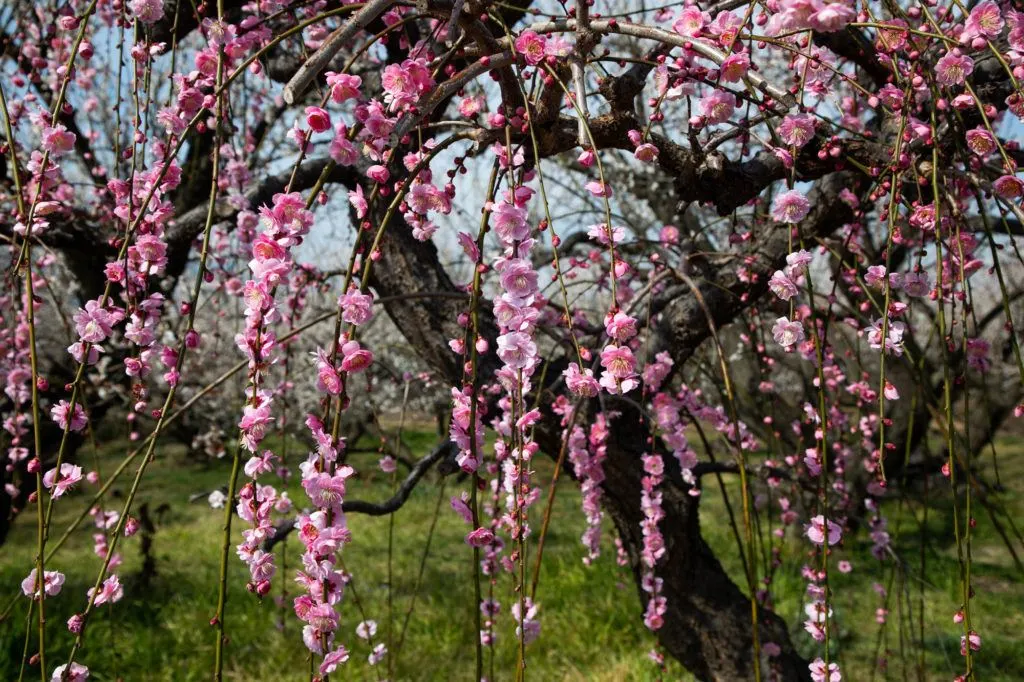
There are two types of trees as well, one that the flowers are in little bunches up and down the horizontal boughs, but the other is the hanging plum. These look almost like umbrellas. The branches hang with plum blossoms up and down the entire branch.
Of course, everyone is taking photos. My favorite part was the dog-stagrammers. Yes, dog instagrammers. They are a thing in Japan, and for this event, the dog owners brought their poodles and Shih Tzus all dressed up in costumes, put them on tables, and had them pose near the trees. It was fascinating to watch.
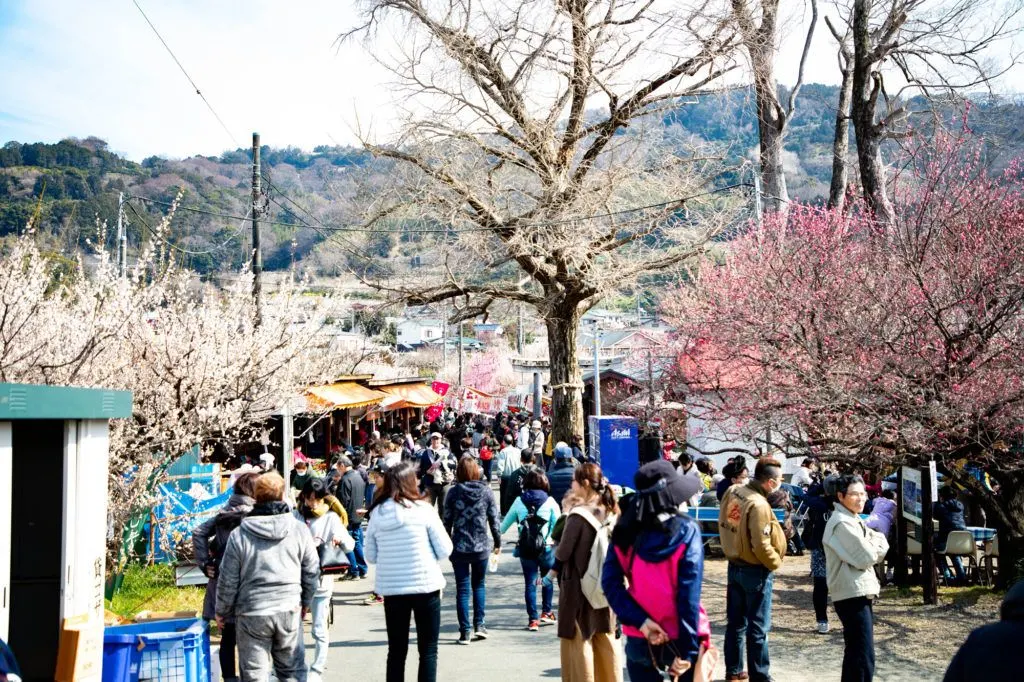
What Foods to Try or Buy
- plum wine
- plum jam
- pickled plums
Umeboshi in ancient times was a food that travelers and soldiers could take with them that would last. They are tart and maybe not too many westerners taste, but it’s worthwhile to give them a try.
The plum wine on the other hand is some of my favorite stuff. Whenever we are offered it, I take it. Take my word for it, try it, love it, and take some home.
Some Highlights of the Festival
The plum festival basically is on throughout the month of February, so it’s pertinent to get a schedule if you are interested in doing more than just walking and enjoying.
Some events they have throughout the month include: traditional archery, a photography exhibit, seed art, poetry readings, and traditional dances. The event times can be found on their official website.

Odawara Castle and Its History
We’re always excited to add another Japanese castle to our list. Unlike the fortresses of Europe, Japanese castles are wooden, tall, and just plain gorgeous. We’ve loved them in Matsumoto, Mastsue, Himeji, and Hirosaka, so we wondered how this one so close to Tokyo would compare.
Built in 1495 by the Omori Clan, Odawara castle had been through three major attacks before it was dismantled in 1870. The rebuilt castle was erected in 1960. (source)
Even though it’s not one of the original castles left in Japan, there are only 12 of those, it’s still a worthy visit. The castle donjon or main building has been transformed into a museum for ancient weaponry, and on the top floor, you can get a spectacular view of Sagami Bay.
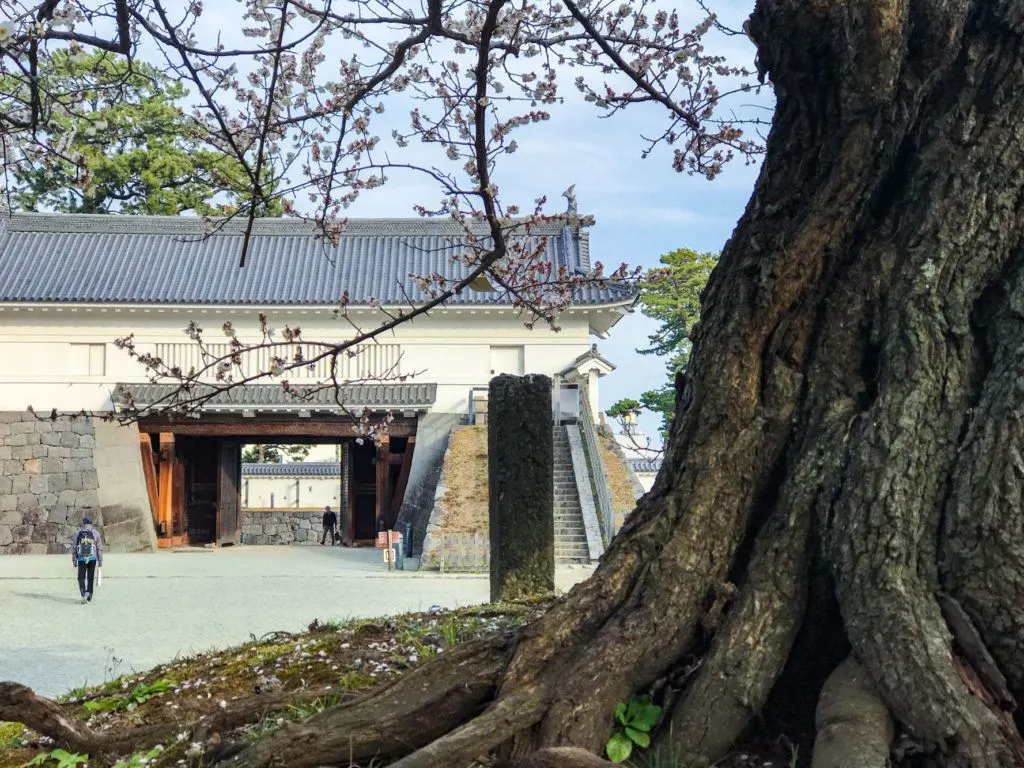
There are two other notable things to do on the castle grounds.
- One is to see the Tokiwagi Gate Samurai Museum where you can see all types of military armor and weapons. You can even try on some of the armor yourself.
- The second is the Rekishi-Kenbunkan Museum or Ninja Museum. It exhibits the history of Odawara and uses a ninja theme to do so. It’s a highlight for the kids as well as adults.
Information for Odawara Castle
Official website: https://odawaracastle.com/
Address: Jonai, Odawara-shi, Kanagawa
Castle and both museum opening times: Except a few days during the year, the castle is open daily from 9:00 – 5:00 pm, but the last tickets are sold at 4:30.
Cost: 500 Yen for adults
Tokiwagi Gate Samurai Museum
Cost: 200 Yen
Rekishi-Kenbunkan Museum (Ninja)
Cost: 300 Yen
Other Things to See and Do in Odawara
- Visit the Kamaboko museum
- Visit the Hakone Brewery
- Head out of town to Daiyuzan Saijo-ji (Buddhist Temple)
- Explore the downtown area, especially at night
How to Get to Odawara from Tokyo
Odawara is extremely close to Tokyo, and gives you the opportunity to explore a castle and enjoy some quiet time. The only time it seems to get busy is during festival times, but it’s still not as crowded as Tokyo.
As always there are plenty of ways to get around in Japan. As you know we almost always drive. Driving gives you the freedom to head up to the temple on your own after seeing the castle, but in Japan driving means paying tolls and parking, both of which can be exorbitant. That is why many people prefer the train, and in this case, we highly recommend it as well.
By Train
It is super simple and quick to get from Tokyo Station to Odawara Station. Just take the Tokaido-Sanyo Shinkansen Kodama Kodama 649 towards Shin-Osaka. It takes a mere 35 minutes.
Photos of Odawara Castle

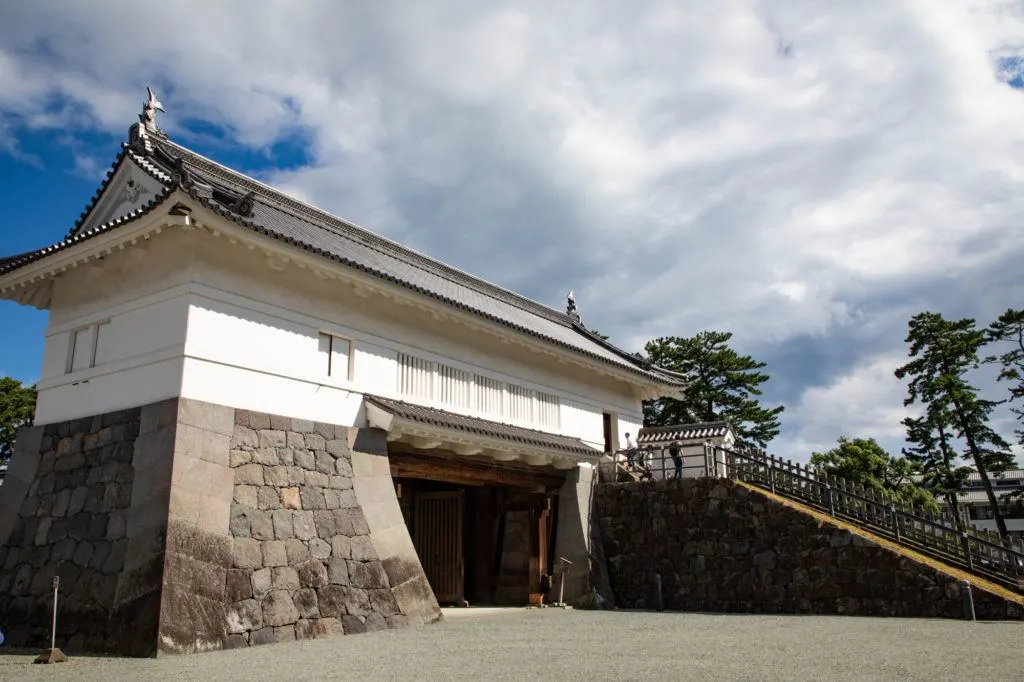


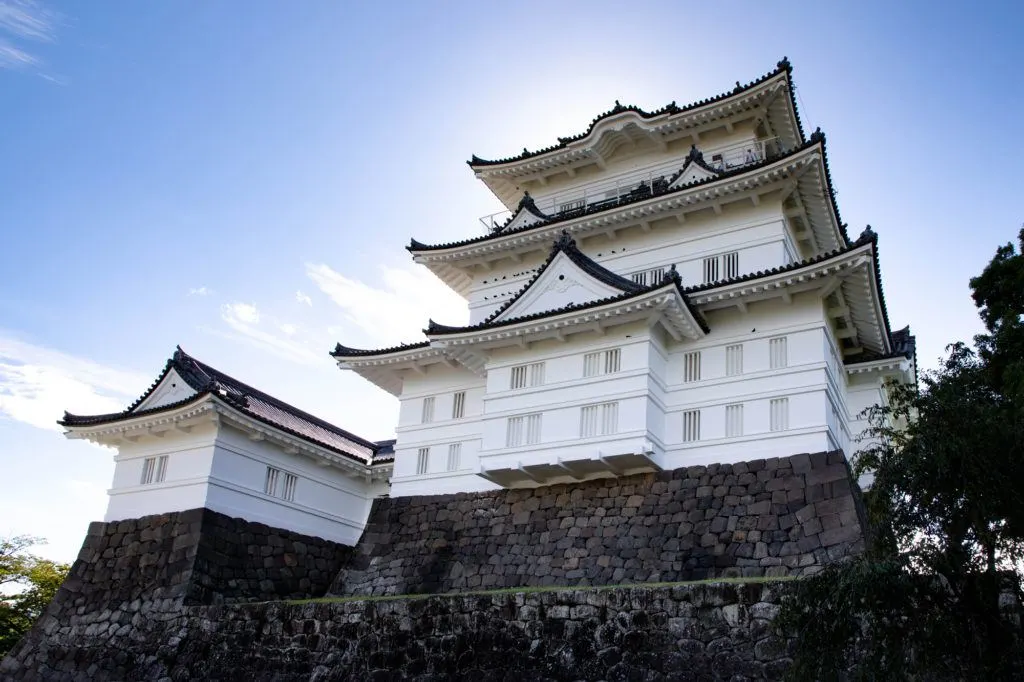


Author Bio: Corinne Vail is a travel photographer, food lover, and a perpetual traveler who has been travel writing for over 14 years. For many years she lived overseas in Germany, Japan, Turkey, South Korea, and the Netherlands teaching the children of the US. military. She’s visited over 90 countries, and she’s not stopping anytime soon.
Pin Odawara Plum Festival


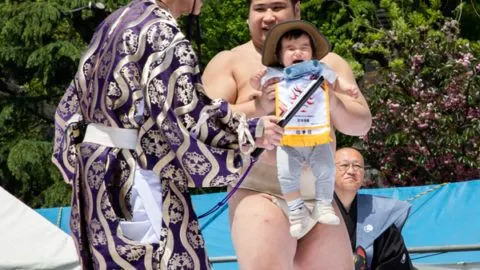






Dana Berezowitz
Saturday 7th of March 2020
Sounds like the best time to go! Love the guide and photos
Corinne Vail
Sunday 8th of March 2020
Thanks Dana!
Katie Diederichs
Saturday 7th of March 2020
Japanese castles are so cool! We visited a couple of them on our most recent trip to Japan and I tried imagining what it would have looked like way back when! It looks especially beautiful with the spring blossoms!